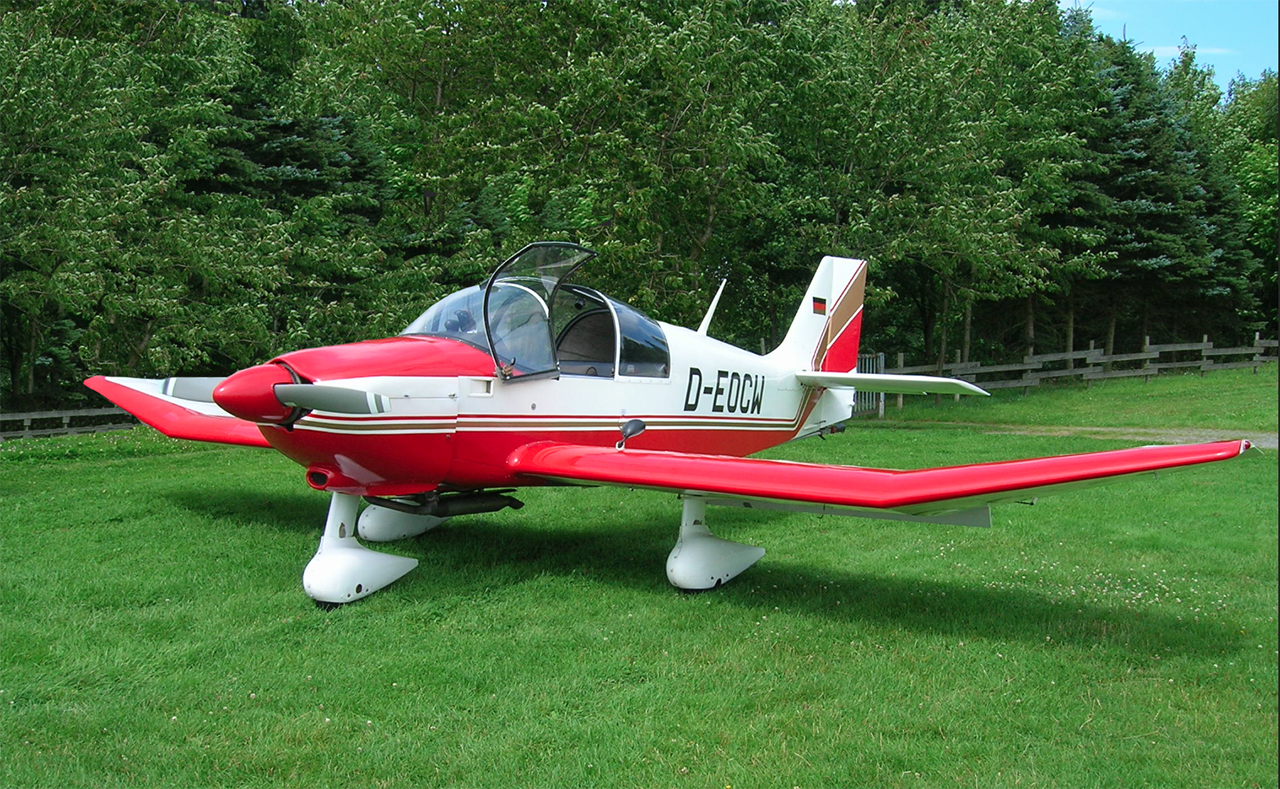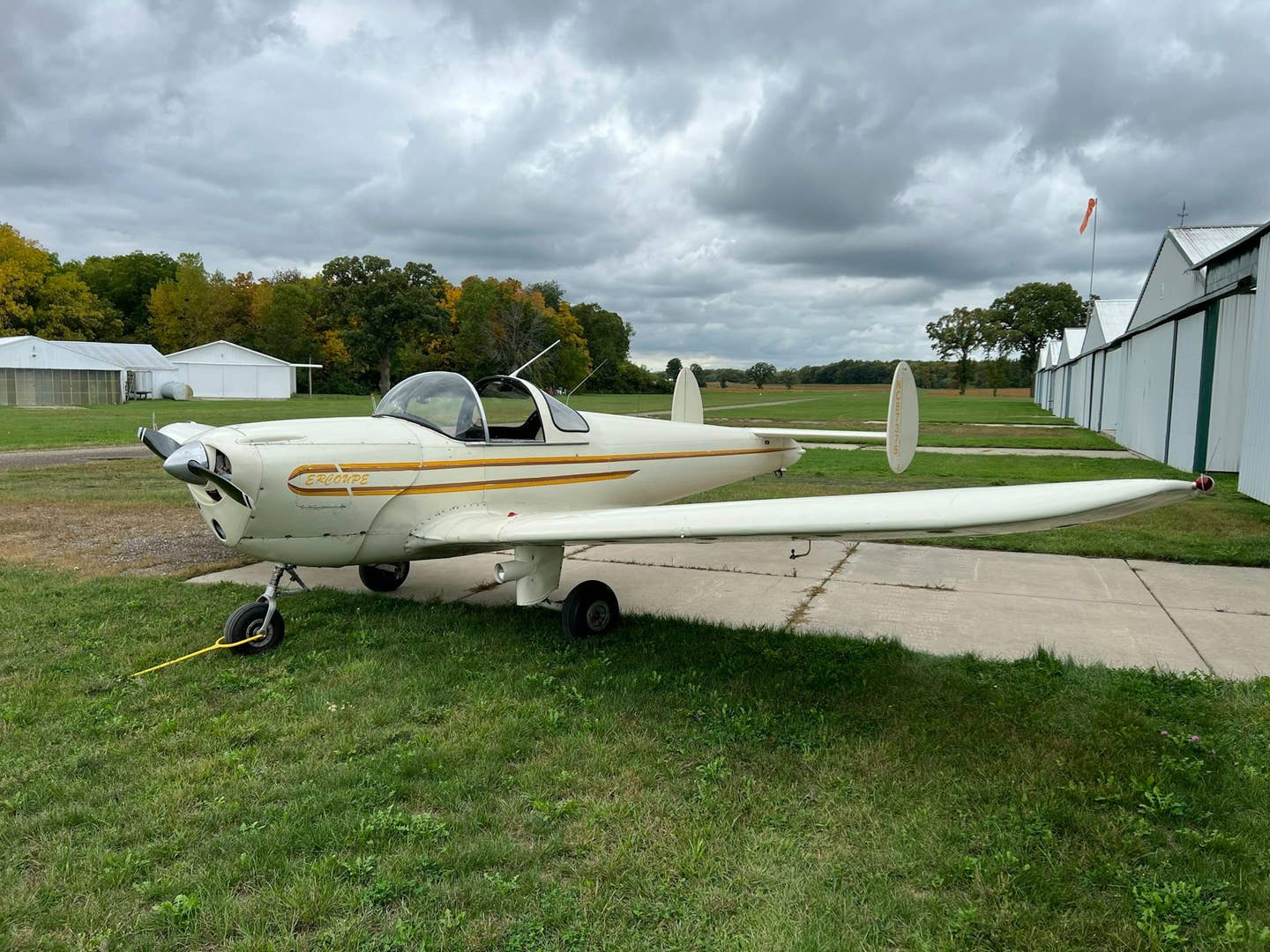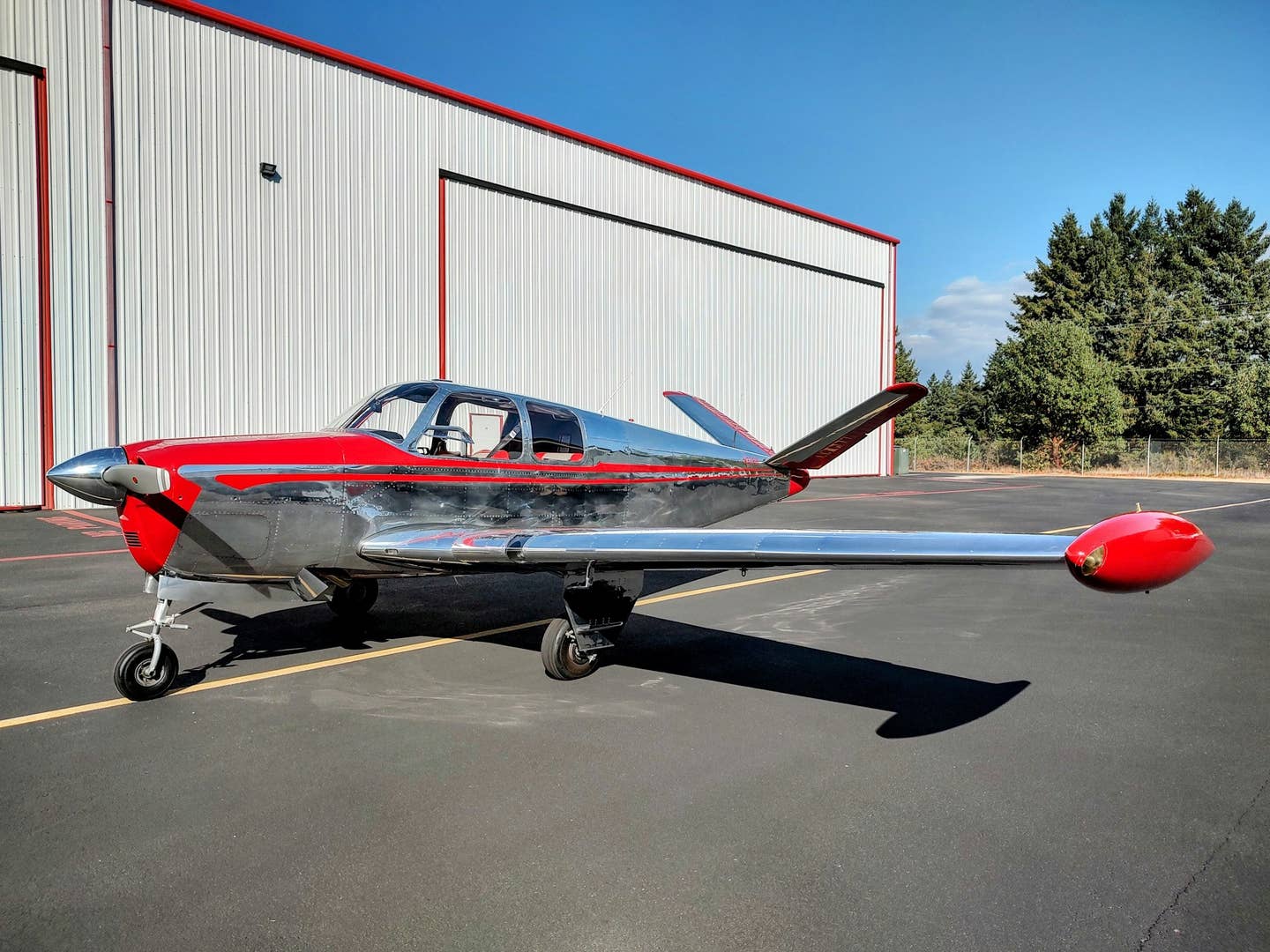Robin DR Series Singles. France‘s longtime favorite wood and fabric four-seat plane
Take a look at the history and evolution of This Incredible Plane!

A Robin DR300 at a bucolic German airstrip. Photo By El Grafo, CC BY-SA 3.0, Via Wikimedia Commons.
Which popular general aviation aircraft has been in production continuously for 50 years, has outstanding cabin visibility, a unique cranked dihedral wing, and is unknown to most North American pilots? While the names Cessna, Piper and Beechcraft and latecomers Cirrus and Diamond dominate the North American market, in France, a dedicated team has been constructing and marketing a distinctive line of single-engine aircraft since the late 1950s. The performance and panache of this elegant four-seat single have made it a favorite across the European Union and Great Britain. This is the Robin DR 300/400 series single.
The story of the DRs begins in 1957 with Pierre Robin and Jean Delemontez. Robin, a flight instructor and aero club owner, was looking for an aircraft to add to his fleet that could carry four people cross country in comfort. Delemontez, the chief designer, brought a four-seat design in which his current company, Jodel, had no interest. In 1957, Delemontez and Robin joined forces to form the CEA (Centre-Est Aeronautique), which later became Avions Robin (Robin Aviation).
Their first offering, the DR 100 featured a large glass greenhouse and cranked dihedral wood and fabric wing design that would become a Robin trademark. The wood and fabric wing, which was losing favor in the 1950s, might have seemed a drawback in a mass-produced family aircraft, but history proved that theory wrong.
Between 1957 and 1972, the company introduced two new models, the DR 200 and DR 300. These could be found in conventional and tri-gear configurations and proved popular trainers for the still relatively small European market. However, their most elegant design was just around the corner.
The DR 400 began serial production in 1972. This definitive iteration of the design featured the now-iconic forward-sliding canopy, cranked dihedral wing (a term that describes the outer section of the wing being angled up), and a host of aerodynamic improvements. The fixed-gear DR 400 was powered by a 180-horsepower Lycoming O-360 engine. With a maximum gross weight of 2,425 pounds, an 800-feet-per-minute rate of climb to its service ceiling of over 15,000 feet, and a cruise speed of over 134 knots, it was a good performer.
As it turned out, the rivet-less wood and fabric wings and cranked dihedral wing design produced less drag than many of the DR 400's conventional metal counterparts. Additionally, the unique wing provided strong lateral stability in the stall regime.
The DR 400 went on to become the bestselling Robin single in the product lineup. However, as 1970 rolled around, the company decided to make the move toward metal construction. Noted aircraft designer Chris Heinz, later famous for the very successful line of Zenith kit-built aircraft, came on board to create the next product line. The resulting HR 1000 series of aircraft (Heinz Robin) retained the fuselage and forward-sliding canopy of the DR 400 series and mated them to a conventional all-metal wing, notably without the cranked dihedral of the 400. While this more modern and conventional variant sold modestly well, the HR series was out of production by the late 1990s, while the wood and fabric DR 400 carried on.
Fast forward to today, and the Robin DR 400 lives on in the current DR 401. A quick scan of the Avions Robin webpage yields no less than 14 specific configurations available to customers. The basic aircraft comes from the factory in a variety of configurations, from a 120 horsepower, two-seat, lightweight training version, the DR 401 LITE, to a 180-horsepower Lycoming-powered long-range travel version, the DR 400 180LR.
More recently, a Continental 155 horsepower diesel variant has emerged. Avionics range from basic VFR conventional round dials to full-glass cockpit IFR kit with full-featured autopilots. Interiors are handcrafted leather. From the construction, it appears that each aircraft is custom configured based on its use and the customer's individual desires. And each sports the basic wood fuselage and wing of the original DR 400. Sort of an affordable classic Bugatti sports car with wings.
Of the total of 4,500 aircraft produced by Avions Robin, 3,000 of these are the wonderfully efficient wood and fabric Robin DR 400/401. So why the success? First things first: The efficient Robin has a lower purchase price, longer range, higher useful load, and shorter takeoff and landing roll than its erstwhile competitors.
â"The story of the DR 400 begins in 1957 with Pierre Robin and Jean Delemontez. Robin, a flight instructor and aero club owner, was looking for an aircraft to add to his fleet that could carry four people cross country in comfort."
The second factor may have more to do with the nature of general aviation on the European continent. While flying clubs have existed on this side of the Atlantic since shortly after the Wright Brothers flew at Kitty Hawk, private ownership and fleet sales dominate the North American general aviation market. However, across the pond, the aero club movement has flourished, with over 500 aero clubs active in France alone. It seems that Pierre Robin, who began as an aero club owner, never forgot that lesson. Maybe the perceived drawbacks of additional maintenance of a wood and fabric design are mitigated by the cost sharing and centralized maintenance in the club environment.
Finally, the Robin DR 300/400 turn out to be a favorite of Aero Club members. The visibility, with the cockpit glass extending down to the pilot and passengers' hips, is helicopter-like. The controls are light and responsive, and the stall characteristics are very forgiving. And finally, as Bellanca Viking owners will tell you, the secure feel of a solid wood aircraft is something special. The Avions Robin website reminds all that properly maintained wooden wings do not have a fatigue life.
Unfortunately, the Robin DR 400/401 is unavailable in the North American market. However, the company's commitment to customization and workmanship and its focus on the Aero Club market seem to be working. If you are lucky enough to travel across the pond, and even luckier to know an aero club member or Robin DR owner, it will be worth your while to hitch a ride in one of these incredible planes.
Learn about another Incredible Plane, the Globe/TEMCO Swift.

Subscribe to Our Newsletter
Get the latest Plane & Pilot Magazine stories delivered directly to your inbox






